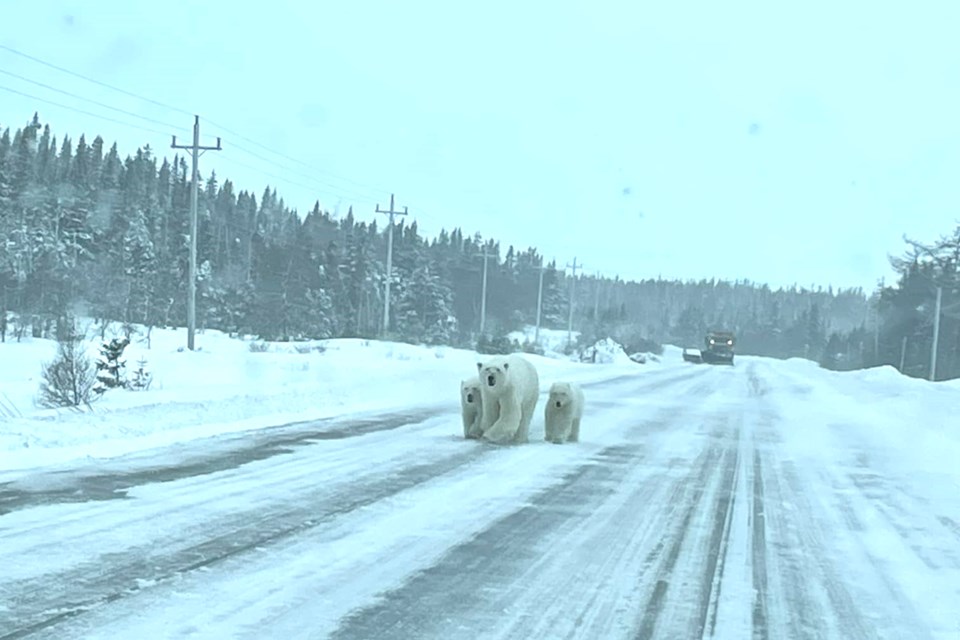No, there haven’t been polar bear sightings in weird places this month - despite what you might read online.
Since the start of January, social media bulletin board pages for several communities in northern Saskatchewan, Manitoba and elsewhere have claimed that polar bears had been spotted nearby, using photos taken elsewhere as apparent proof.
Community Facebook pages for Pelican Narrows, The Pas and other northern locations have shown a photo purporting to show a family of polar bears walking down a paved highway in a snowy, northern-looking community. The photo used along with the alleged “sightings” does not actually show the bears in the communities mentioned. Reverse image searches for the photo show it was taken last year near Milan Arm, Newfoundland, near the remote northern tip of the island where the bears sometimes end up during the winter freeze.
The same post has shown up on Facebook pages across Canada, claiming the bears were found in (among other places) Cape Breton Island in Nova Scotia, in southern Quebec and other locations.
Other posts purporting to show polar bears in various communities have used a different photo of a bear walking across a snowy road at night - one post claimed that the bear had been seen in Leaf Rapids. That photo is also not from the north - it was taken in 2019 in the Norwegian Arctic Ocean territory of Svalbard, not in Leaf Rapids and not taken earlier this year.
Polar bears can be found in Manitoba, but usually in the remote far north and usually near the shore of Hudson Bay and Churchill. The bears have only ever been independently spotted in Saskatchewan once, with one found in 2000 near the Manitoba border.
Most of Manitoba’s polar bear population can be found from the Chesterfield Inlet area in Nunavut through to the Manitoba/Ontario border near the bay’s shore. Over the winter, the bears are most often found on Hudson Bay itself, moving onto the ice from mid-November until the thaw in summer.
“The majority of the population spends most of the year, from mid-November to mid-July, on the ice of Hudson Bay. Pregnant females are an exception to this, spending from mid-November through to March in maternity dens on land, and then moving to the sea ice with their cubs,” reads a FAQ from Manitoba’s ministry of economic development, investment, trade and natural resources.
“From mid-July through to mid-November the entire population is forced onto adjacent coastal lands as the ice disappears. The greatest concentrations during this time period occur between the Nelson River and the town of Churchill.”
While occasionally sightings of the bears can be found in Gillam and other communities in northeast Manitoba, the bears do not usually make their way further south or further east during the winter.
The bears are under threat due partially to climate change - researchers from the Manitoba and Nunavut provincial and territorial governments declined from 2016 to 2021, with barely 600 of them left, according to aerial surveys.




